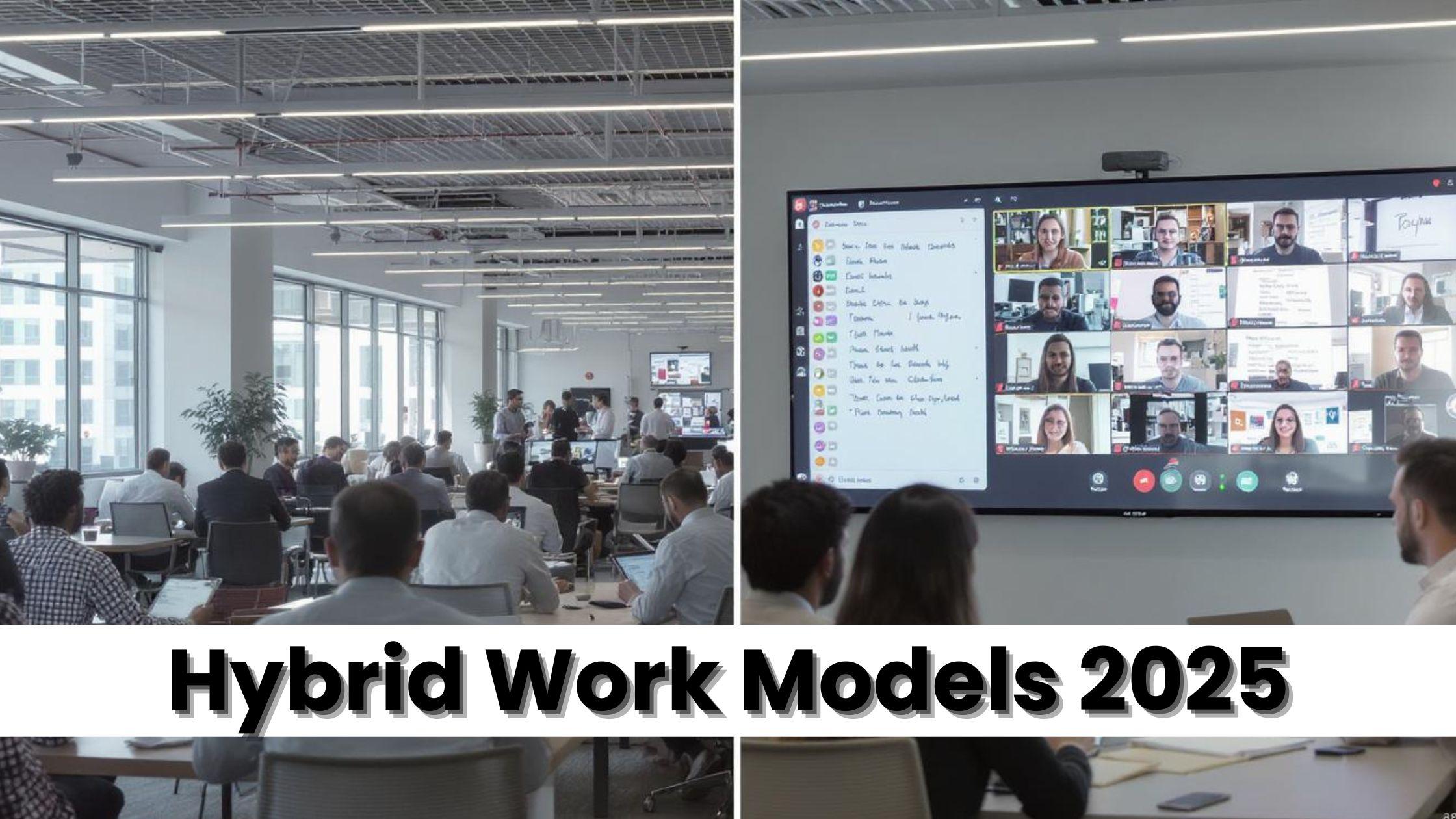Driving Engagement Through Hybrid Work Models 2025

The modern workplace is changing, and Hybrid Work Models 2025 are becoming essential for organizations striving to balance flexibility with engagement. Hybrid work enables employees to split their time between remote and in-office work, improving work-life balance while maintaining productivity. Organizations that implement these models effectively foster a motivated, collaborative, and high-performing workforce.
Understanding Hybrid Work in 2025
Hybrid work allows employees to choose where they work based on productivity, personal needs, and organizational goals. In 2025, hybrid models are more than just a convenience—they require structured workflows, technology support, and a culture that promotes collaboration. Employees gain autonomy and flexibility, while managers focus on results, innovation, and team alignment rather than physical presence.
Benefits of Hybrid Work Models
Hybrid work offers numerous benefits. Employees experience reduced stress, improved work-life balance, and higher engagement. Organizations can access a broader talent pool and reduce office-related costs. Results-oriented work cultures enhance accountability and innovation. Additionally, hybrid work improves employee retention by providing flexible work arrangements that accommodate diverse needs and lifestyles.
Challenges in Hybrid Work Implementation
Despite the benefits, hybrid work presents challenges. Dispersed teams may face communication gaps and reduced collaboration. Cybersecurity risks increase as employees access sensitive data remotely. Managers may struggle to track performance and maintain accountability. Addressing these challenges requires clear policies, effective technology, and leadership practices that prioritize engagement, trust, and productivity.
Best Practices for Flexibility and Engagement
1. Establish Clear Policies: Define expectations for remote and in-office work, including schedules, availability, and responsibilities. Transparency aligns teams and reduces confusion.
2. Use Collaboration Tools Effectively: Platforms like Slack, Microsoft Teams, Zoom, and project management software facilitate communication, task management, and collaboration across hybrid teams.
3. Prioritize Employee Well-being: Flexible schedules, wellness programs, and mental health support enhance engagement, reduce burnout, and improve productivity.
4. Focus on Results-Oriented Management: Shift evaluation from hours worked to measurable outcomes. Clear performance metrics encourage accountability and efficiency.
5. Maintain Regular Communication: Schedule routine check-ins, team meetings, and feedback sessions to maintain alignment, address concerns, and strengthen team cohesion.
Technology and Infrastructure for Hybrid Work
A strong technology foundation is crucial. Cloud-based applications, secure remote access, and collaboration platforms enable seamless workflows. Cybersecurity measures protect sensitive data, while ergonomic home office setups ensure employees work comfortably and efficiently. Technology investments support productivity and effective hybrid collaboration.
Building a Collaborative Culture
Hybrid work thrives in a culture that encourages collaboration. Virtual brainstorming, cross-functional projects, and knowledge-sharing platforms strengthen team engagement. Recognition programs and team-building activities help remote employees feel included. A strong collaborative culture promotes innovation and reinforces organizational identity.
Training and Upskilling
Continuous learning is essential for hybrid work. Employees should be trained on digital tools, remote communication, and productivity strategies. Ongoing upskilling ensures teams remain capable, adaptable, and aligned with evolving hybrid workflows, enhancing overall organizational performance.
Measuring Hybrid Work Success
Performance metrics help evaluate hybrid work effectiveness. Key indicators include productivity, engagement scores, project completion rates, and employee satisfaction. Tracking these metrics allows leaders to refine strategies, close gaps, and optimize operations, ensuring hybrid models deliver results.
Leadership in Hybrid Work Environments
Effective leadership is crucial in hybrid settings. Managers must demonstrate empathy, transparency, and a results-focused approach. Recognizing achievements, supporting growth, and fostering innovation strengthens trust and engagement. Leaders who empower teams to collaborate across locations build high-performing hybrid organizations.
Optimizing Hybrid Workspaces
Physical offices should include flexible seating and collaboration hubs, while virtual environments replicate these opportunities for remote employees. Well-designed hybrid workspaces enhance productivity, engagement, and team cohesion.
Legal and Compliance Considerations
Hybrid work policies must comply with labor laws, remote work regulations, and data privacy standards. HR and legal teams should collaborate to create policies that protect employees and the organization, reducing risk and fostering trust in hybrid practices.
Future Trends in Hybrid Work
Hybrid work in 2025 will increasingly integrate AI-driven productivity tools, advanced collaboration platforms, and employee experience-focused strategies. Organizations adopting these trends will attract talent, optimize workflows, and maintain a competitive edge in a rapidly evolving work environment.
Driving Success in Hybrid Work Models
Implementing Hybrid Work Models 2025 successfully requires clear policies, technology support, and a collaborative, flexible culture. Organizations that prioritize well-being, communication, and results-oriented management can create hybrid environments that maximize productivity, engagement, and long-term growth.
Read Full Article : https://bizinfopro.com/blogs/hr-blogs/hybrid-work-models-2025-best-practices-for-flexibility-and-productivity/
About Us : BizInfoPro is a modern business publication designed to inform, inspire, and empower decision-makers, entrepreneurs, and forward-thinking professionals. With a focus on practical insights and in‑depth analysis, it explores the evolving landscape of global business—covering emerging markets, industry innovations, strategic growth opportunities, and actionable content that supports smarter decision‑making.
- Art
- Causes
- Crafts
- Dance
- Drinks
- Film
- Fitness
- Food
- Games
- Gardening
- Health
- Home
- Literature
- Music
- Networking
- Other
- Party
- Religion
- Shopping
- Sports
- Theater
- Wellness




